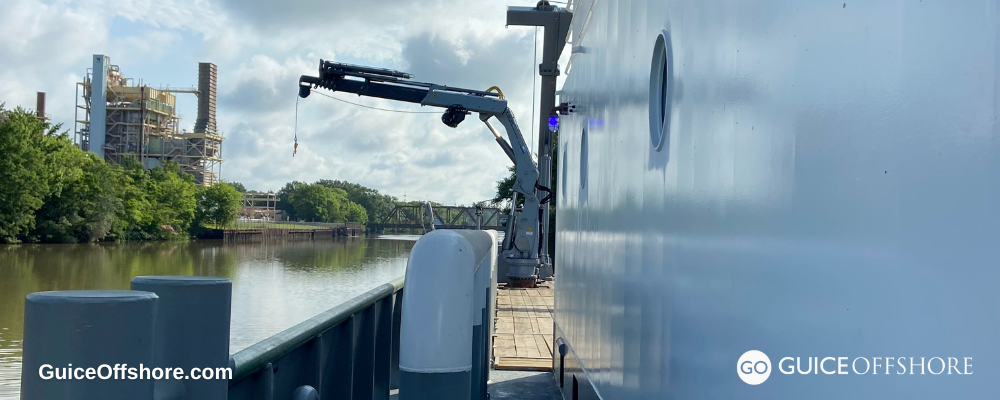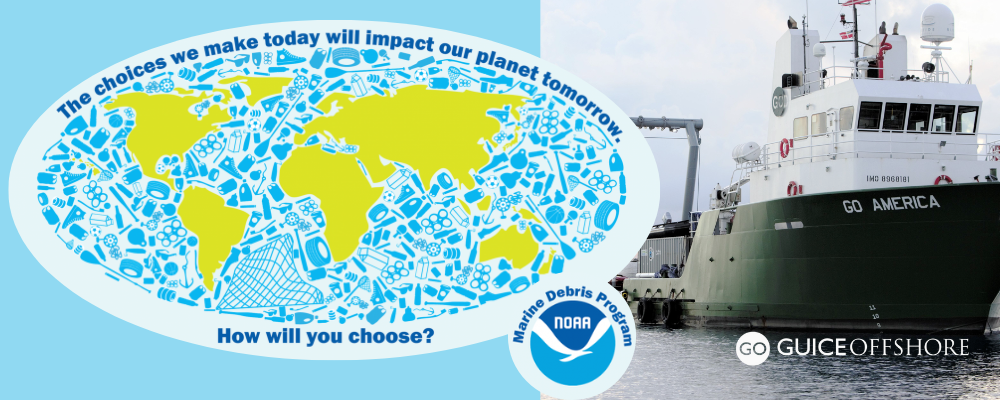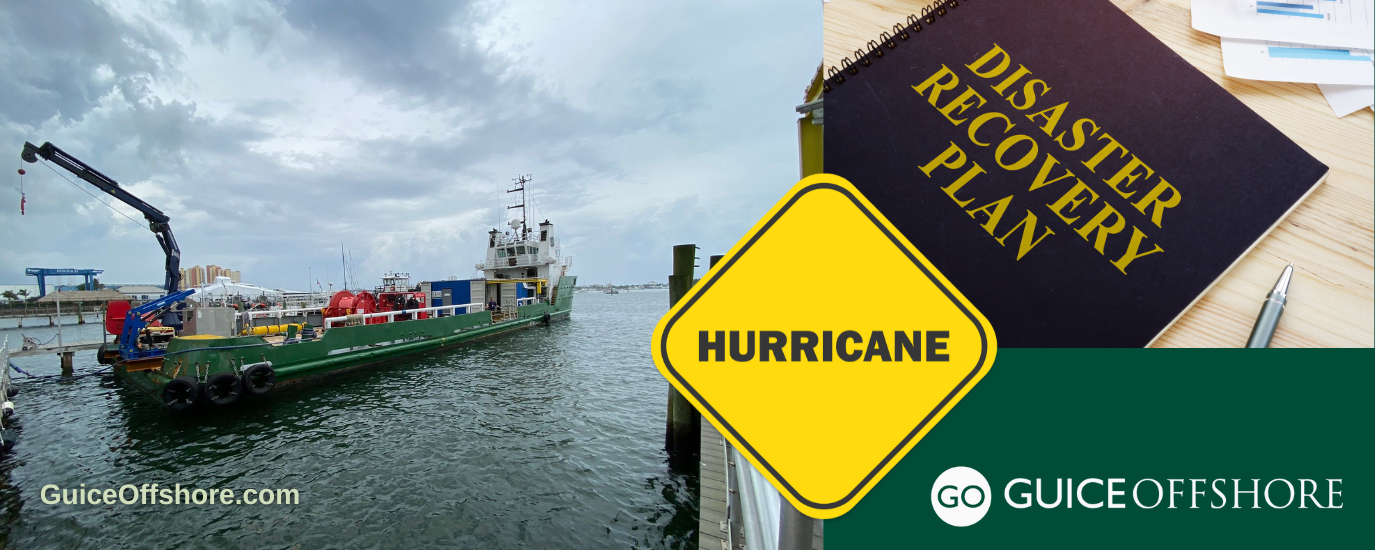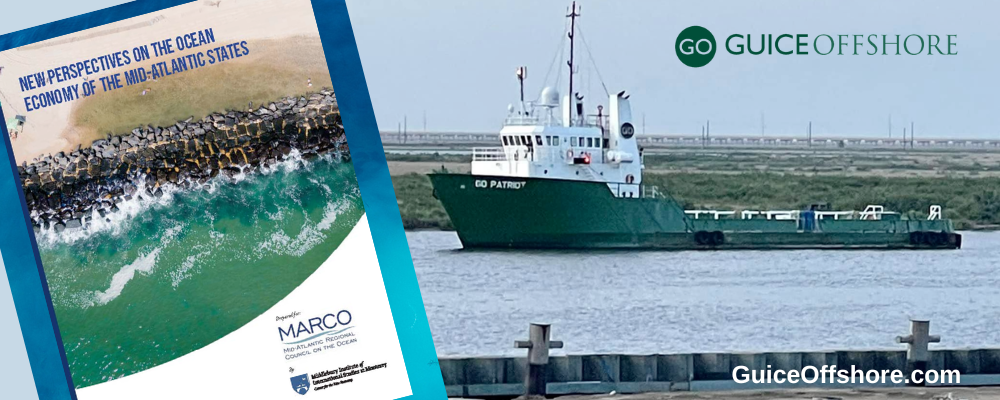Our oceans are filled with items that do not belong there. Huge amounts of consumer plastics, metals, rubber, paper, textiles, derelict fishing gear, vessels, and other lost or discarded items enter the marine environment every day, making marine debris one of the most widespread pollution problems facing the world’s ocean and waterways.
To help address the issue, particularly in regard to post-disaster cleanup, the National Oceanic and Atmospheric Administration’s (NOAA) Marine Debris Program published the “United States Marine Debris Emergency Response Guide” (Guide) on December 8, 2023. Developed in collaboration with other federal agencies, the Guide aims to improve preparedness for responding to marine debris after hurricanes and other disasters in coastal areas of the United States, including the Great Lakes and territories.
Marine debris ends up in the ocean every day as a result of littering and poor waste management. Occasionally, such as during natural disasters, large amounts of debris enter waterways all at once. Disaster-related debris can include abandoned and derelict vessels, construction and demolition debris, and household hazardous waste, among other types of debris. It can be a danger to boat traffic, damage habitat, and even release pollution.
To prepare for these impacts, the NOAA Marine Debris Program works with coastal states and territories to develop response guidance documents. The new U.S. Guide serves as a reference for all states and territories to support regional and national planning and response efforts, as well as improve preparedness for response and recovery operations following a disaster that generates large amounts of marine debris in the United States.
The Guide seeks to capture the most likely response structures and actions at the federal level, with the understanding that state and local agency involvement is a critical component of an effective response.
NOAA also publishes state-based Emergency Response Guides and Regional Action Plans HERE that provide specific direction for coordinating local, state, and federal response to acute marine debris events and a strategic framework for partners across a specific state or region to address the problem.
Because all incidents are different, some aspects of marine debris response are subjective and not solely dependent on prevailing roles and authorities. This is especially true following a major, catastrophic, or unprecedented incident.
Marine debris is defined as any persistent solid material that is manufactured or processed and directly or indirectly, intentionally or unintentionally, disposed of or abandoned into the marine environment or Great Lakes (33 U.S.C. § 1956(3)). The Guide addresses marine debris generated as a result of both natural and anthropogenic disasters (meaning any disaster caused by human action or inaction) impacting the United States.
Although vegetative debris is not included in the legal definition for marine debris, responders have identified it as a common debris stream of concern following natural disasters. Therefore, the term “marine debris” is used more generally in the Guide and includes vegetative material and debris that enters a waterway following an acute incident and poses a threat to the natural or built environment. This also includes shoreline and wetland debris and debris in some inland, non-tidal waterways.
The Guide also specifically addresses marine debris resulting from episodic incidents, such as disaster debris, and may not apply to chronic marine debris issues. It is a living document and is subject to change as additional information becomes available and updates are needed. It will be maintained by the NOAA Marine Debris Program and will 10 undergo formal reviews as needed.
The Guide and subsequent versions is posted on the NOAA Marine Debris Program website HERE.
Guice Offshore Marine Disaster Response, Submerged Disaster Debris Cleanup, Salvage, Inspection and Repair
In the aftermath of a storm, finding and removing submerged debris amid devastated inland waterways and coastal areas can be critical in restoring utilities, transit and maritime traffic into ports or other crucial commerce locations.
Guice Offshore brings substantial experience in supporting inspection and repair activities following disaster events along with assisting in marine salvage, a broadly defined industry that encompasses rescue towing, putting out fires, patching or repairing a ship, refloating a sunken or grounded vessel, moving a disabled vessel in order to clear navigation channels, and raising sunken ships or their cargo. The versatility of the GO mini-supply vessel fleet is well-suited for many of these roles. In fact, Guice Offshore has supported the needs of salvage operations like the Golden Ray and even treasure hunting projects.
To help with virtually any kind of underwater removal, Guice Offshore has the vessels, crew and often the deck machinery like cranes, winches, a-frames and can even access submersible and remote-operated underwater vehicles via preferred vendors and partnerships.
Our various multi-purpose vessels such as the GO America can be available to assist with all types of hurricane recovery operations, and even serve as floating accommodations for FEMA, U.S. Department of Homeland Security, federal and state emergency management staff, and other military, law enforcement and government recovery personnel.
Check out our fleet specs at GuiceOffshore.com and call David Scheyd at 985-273-2769 or email him at David.Scheyd@guiceoffshore.com to book a GO vessel today!



